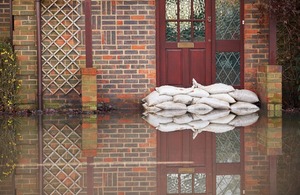Asset resilience, emergency planning and response: The National Digital Twin Programme (NDTP)
This demonstrator aims to understand how digital twin technologies and processes can improve emergency response and help to increase the resilience of key assets and services.

Commenced: July 2022
Aims
The aims of this demonstrator are:
- to test how digital twin-related technologies and processes can support and enhance the management of assets and thereby their security and resilience and that of the services they provide
- to test how digital twin-related technologies and processes can support our ability to be able to better plan for, and respond to, incidents
- to examine how digital twin-related technologies and processes can support improved delivery of regulatory requirements and national resilience standards
Key stakeholders
- Isle of Wight Council
- Hampshire & Isle of Wight Constabulary
- Hampshire & Isle of Wight Fire and Rescue
- Isle of Wight NHS Trust
- South East Coast Ambulance Service
Outputs
The outputs of this demonstrator are:
- a digital tool used for assessing and understanding infrastructure vulnerability to support understanding of broader system resilience
- a visualisation tool that supports key stakeholders to understand the impact of different types of events and assists in planning for, and responding faster to, those incidents
Description
The Isle of Wight, characterised by its unique topography and expansive coastline, grapples with issues related to land slippage, flooding and other weather-related incidents.
The process of coastal erosion, a prevailing factor on the Island, has perpetuated frequent land slippage occurrences along key infrastructural elements such as the Military Road.
These circumstances highlight the importance of proactive, data-driven, effective management, balanced with the need to preserve the surrounding protected landscape.
Furthermore, the Island’s vulnerability to flooding necessitates rigorous and informed planning and response methods. These types of challenges have broader, well recognised implications for infrastructural integrity, economic stability, and the well-being of individuals.
Digital twin-related technologies and processes offer the potential to better predict and manage these risks, by enabling stakeholders to simulate various scenarios and test preventative and reactive strategies.
In turn, this provides the opportunity to increase the resilience of key infrastructure and services and improve emergency response, as well as contributing to the broader policy discourse on climate resilience and emergency preparedness.
Next steps
The tools will be tested as part of a resilience exercise day in order to:
- test the benefits which they bring in their current level of maturity
- develop a deeper understanding of the needs of key stakeholders in responding to an event as well as the delineation of the central problems that require solutions
- identify the developments needed in order to move into a testing phase for emergency responsiveness
In addition, we will be working with a range of stakeholders to understand their needs in managing critical assets, as well as in improving the security and resilience of those assets and the services they provide.
This will allow us to begin to explore how digital twin-related technologies and processes can be used to test different scenarios in the digital space, and to begin to be able to answer crucial ‘what if’ scenarios.